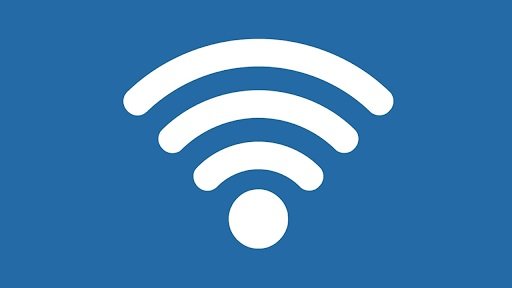“🚀Boost your internet with our guide! Explore options for the best WiFi router to optimize your connection 🌐💻👍. Get superior speed & reliability!”
WiFi routers are integral to modern life, facilitating wireless internet access for multiple devices. They have revolutionized communication, work, education, and entertainment by providing high-speed internet across extensive areas. Routers convert wired connections into wireless signals, empowering devices like laptops, smartphones, and smart TVs. From video conferencing to online gaming and streaming, uninterrupted internet access is crucial, underscoring the indispensable role of WiFi router Singapore has in contemporary living.
Understanding WiFi Routers
A WiFi router acts as a hub that connects devices in a network, enabling wireless internet access by distributing data packets between devices and the main internet connection. This device not only ensures secure web browsing but also facilitates seamless file sharing and media streaming among connected gadgets. Essentially, it takes the wired internet signal from your modem and broadcasts it wirelessly to WiFi-enabled devices within its range.
WiFi routers typically come in three types: single-band, dual-band, and tri-band. Single-band routers operate at the 2.4 GHz frequency, offering a longer range but limited speed. Dual-band routers operate on both 2.4 GHz and 5 GHz bands simultaneously, providing faster speeds over shorter distances. Tri-band routers add a 5 GHz band, ideal for dense, high-traffic environments where multiple devices require simultaneous high-speed internet access.
WiFi 5 and WiFi 6 Standards
WiFi 5 (802.11ac) and WiFi 6 (802.11ax) are wireless standards shaping digital communication. WiFi 5 offers moderate speeds but struggles with large data packets and high-density scenarios. In contrast, WiFi 6 provides faster speeds, improved efficiency in handling multiple device connections, better power-saving capabilities, and superior performance in congested areas. WiFi 6 is poised to become the standard for future network environments due to its enhanced capabilities and efficiency.
Factors Affecting WiFi Router Performance
Frequency bands play a critical role in communication technologies. High-frequency bands, like those used in 5G networks, enable fast data transmission but may struggle with obstacles. Lower frequencies penetrate barriers better but offer slower speeds, crucial for rural areas requiring extended coverage. The allocation and utilization of frequency bands shape digital landscapes, impacting everything from everyday mobile usage to emergency communication systems.
Antenna count significantly influences communication system performance. More antennas improve signal strength and quality, enabling more data transmission and enhancing network robustness. Technologies like MIMO (Multiple Input Multiple Output) leverage multiple antennas to reduce interference and improve communication efficiency, critical in modern wireless networks.
Wireless Standards and Compatibility
Wireless standards ensure device compatibility, expandability, and cybersecurity in digital communication. They facilitate seamless device connectivity and incorporate encryption features to secure data transmission. These standards optimize network reliability and signal strength, defining overall network stability. Advancements in wireless technology coincide with the evolution of these standards, shaping the future of digital connectivity.
The router’s CPU and RAM are vital for high-performance internet connections. A robust CPU manages data routing, influencing speed and performance, while sufficient RAM stores temporary data during operation. These components ensure efficient handling of data streams, even under heavy network traffic, facilitating smooth online activities like gaming, streaming, and file downloads.
Choosing the Best WiFi Router
Choosing the right WiFi router involves assessing your internet speed requirements based on your online activities. Basic browsing may suffice with lower speeds, while activities like gaming and HD video streaming demand higher speeds. Multiple device connections also increase the need for faster internet. Understanding your usage patterns ensures you select an internet plan that meets your needs without overpaying or suffering from insufficient bandwidth.
Optimizing WiFi Router Performance
Effective router placement is crucial for optimal signal distribution. Placing the router centrally and elevated within your home or office minimizes obstructions and improves coverage. Materials like concrete walls and metal objects can block wireless signals, so positioning the router away from these obstacles enhances connectivity. Additionally, avoiding proximity to other electromagnetic devices reduces interference, ensuring a stable internet connection.
Regular firmware updates are essential for maintaining router functionality and security. Updates provide critical security patches to protect against cyber threats and introduce enhancements to improve performance and fix bugs. Keeping the firmware updated ensures smooth operation and safeguards your digital devices from vulnerabilities.
Adjusting WiFi channels can significantly improve wireless connectivity by reducing radio frequency interference. Switching to less crowded channels minimizes overlaps with other devices, enhancing signal quality and overall bandwidth utilization. This optimization optimizes coverage, reduces lag, and ensures efficient internet usage in today’s technology-driven world.
Conclusion
WiFi routers are indispensable tools that enhance connectivity and performance in daily life. By understanding their technology, choosing the right router, and optimizing its performance, users can ensure seamless internet access for various activities. Whether for work, entertainment, or communication, WiFi routers play a crucial role in enabling modern lifestyles and providing reliable and high-speed internet connectivity across devices and environments.



